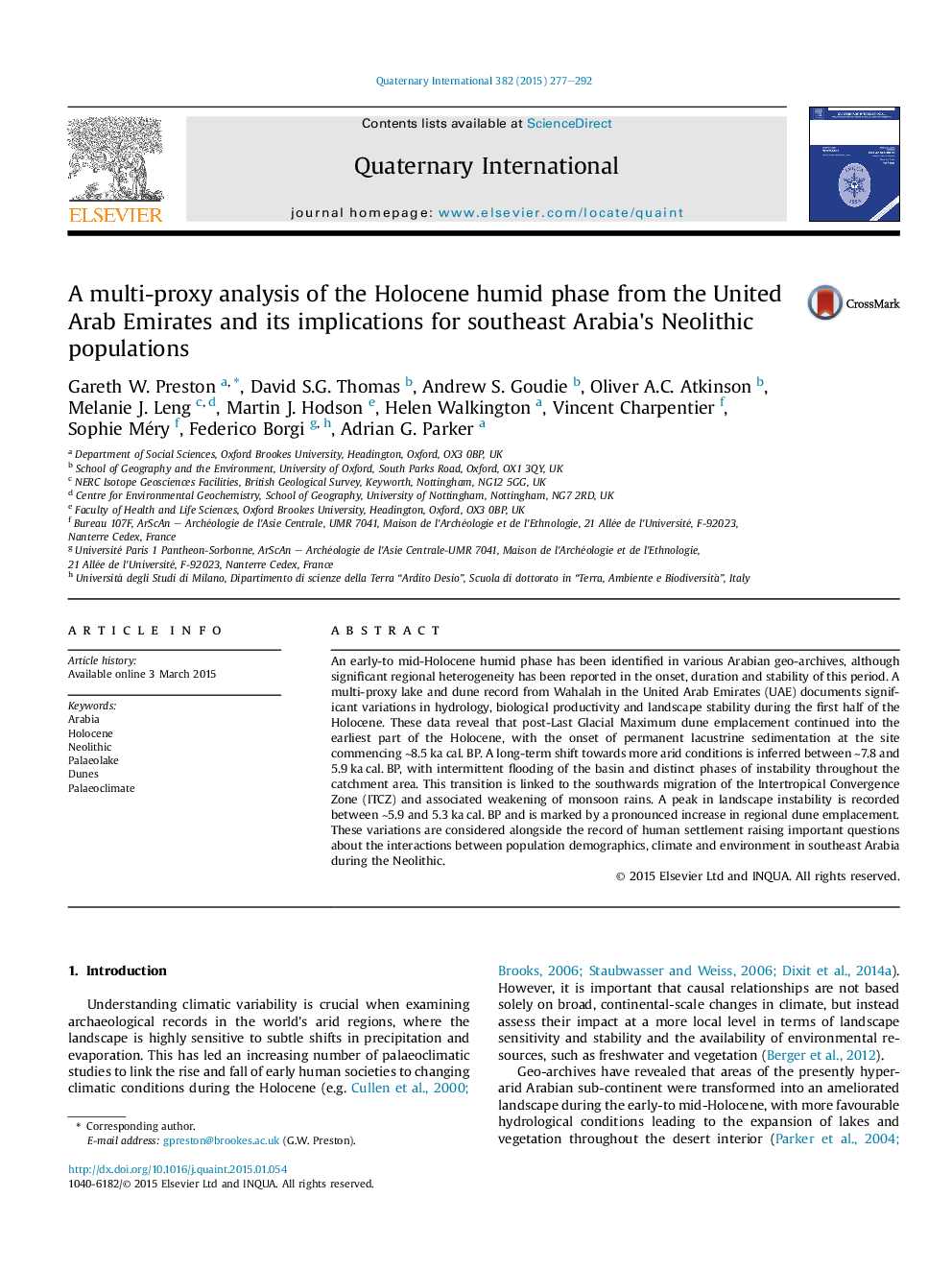| کد مقاله | کد نشریه | سال انتشار | مقاله انگلیسی | نسخه تمام متن |
|---|---|---|---|---|
| 1040638 | 1484116 | 2015 | 16 صفحه PDF | دانلود رایگان |
عنوان انگلیسی مقاله ISI
A multi-proxy analysis of the Holocene humid phase from the United Arab Emirates and its implications for southeast Arabia's Neolithic populations
ترجمه فارسی عنوان
تجزیه و تحلیل چند پروکسی فاز مرطوب هولوسن از امارات متحده عربی و پیامدهای آن برای جمعیت های نوسنگی جنوب شرقی عربستان
دانلود مقاله + سفارش ترجمه
دانلود مقاله ISI انگلیسی
رایگان برای ایرانیان
کلمات کلیدی
موضوعات مرتبط
مهندسی و علوم پایه
علوم زمین و سیارات
زمین شناسی
چکیده انگلیسی
An early-to mid-Holocene humid phase has been identified in various Arabian geo-archives, although significant regional heterogeneity has been reported in the onset, duration and stability of this period. A multi-proxy lake and dune record from Wahalah in the United Arab Emirates (UAE) documents significant variations in hydrology, biological productivity and landscape stability during the first half of the Holocene. These data reveal that post-Last Glacial Maximum dune emplacement continued into the earliest part of the Holocene, with the onset of permanent lacustrine sedimentation at the site commencing â¼8.5 ka cal. BP. A long-term shift towards more arid conditions is inferred between â¼7.8 and 5.9 ka cal. BP, with intermittent flooding of the basin and distinct phases of instability throughout the catchment area. This transition is linked to the southwards migration of the Intertropical Convergence Zone (ITCZ) and associated weakening of monsoon rains. A peak in landscape instability is recorded between â¼5.9 and 5.3 ka cal. BP and is marked by a pronounced increase in regional dune emplacement. These variations are considered alongside the record of human settlement raising important questions about the interactions between population demographics, climate and environment in southeast Arabia during the Neolithic.
ناشر
Database: Elsevier - ScienceDirect (ساینس دایرکت)
Journal: Quaternary International - Volume 382, 24 September 2015, Pages 277-292
Journal: Quaternary International - Volume 382, 24 September 2015, Pages 277-292
نویسندگان
Gareth W. Preston, David S.G. Thomas, Andrew S. Goudie, Oliver A.C. Atkinson, Melanie J. Leng, Martin J. Hodson, Helen Walkington, Vincent Charpentier, Sophie Méry, Federico Borgi, Adrian G. Parker,
